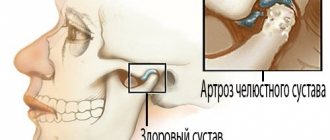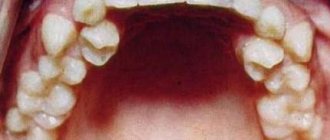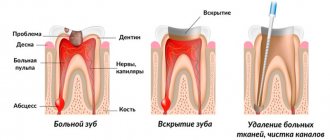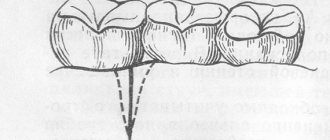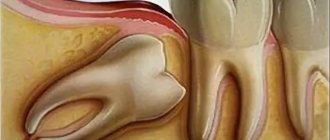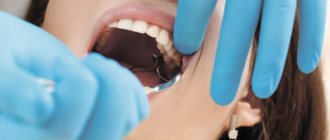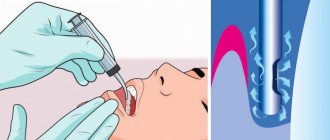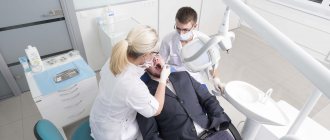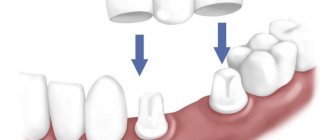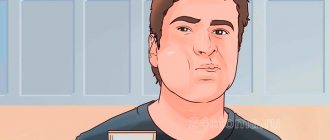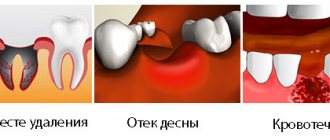All patients spend 7-10 days in a hospital setting, up to a maximum of 17-21 days, depending on capabilities. If there are indications, we operate on patients on duty: when there is large blood loss or a violation of the integrity of bone tissue with large displacement, patients should be taken immediately to the operating room. In most cases, you must first use a conservative method to prepan the fragments by hand and put them in the correct position, and, if indicated, then operate. After the operation, they remain in the hospital for at least 5-10 days. Before the sutures are removed, the patient is observed again and control photographs are taken. Subsequently, these patients undergo follow-up treatment in a clinic at their place of residence. After 4-6 weeks, control photographs are taken. If there is no change, re-displacement and patient complaints, that is, it is clinically and radiologically clear that the fracture is healing without any changes, then we remove the splints.
After this, the most important stage of rehabilitation begins. Since the teeth have been in contact with each other for a whole month, changes occur both in the mucous membrane and in the bone tissue. The first stage of rehabilitation is always professional hygiene. Despite the fact that we clean the patient’s mouth in a hospital setting and explain how to clean it at home, for 10-14 days after discharge he is without daily medical supervision. From the outside, it can clean your teeth quite well. Plaque always remains on the side of the tongue and the inner surface; hygiene there is always difficult. Therefore, the first stage is professional hygiene.
The next stage is the appointment of physiotherapy aimed, first of all, at reducing swelling and resolving hematomas. It is possible to use mechanotherapy. Mechanotherapy is the development of the lower jaw, the ability to open the mouth wide using a special device or special gymnastics. We use various diets to control how the patient opens his mouth and how he chews food. This stage is sometimes omitted when receiving these patients in a clinic, as this is a rather complex and painstaking process. Most techniques are widely described in methodological manuals. Sometimes we recommend that patients do mechanotherapy on their own.
How to develop your jaw yourself after removing the splints?
There are modern machines that you can buy anywhere that help you gradually develop mouth opening. Since the teeth were in constant contact with each other for 6 weeks, it is important. read more
Are operations to treat jaw fractures performed under local anesthesia or general anesthesia?
In most cases, if there is no strong displacement of fragments and comminuted fractures within the dentition, the operation can be performed under local anesthesia. Modern anesthetics allow you to do everything. read more
Fractures of the lower jaw. How do doctors deal with a patient who is intoxicated?
In this case, it is important to stabilize it. If we have a patient under the influence of alcohol or drugs, then we apply splints, but in no case do we put rubber traction between them or not. read more
Source doctor.ru
The most common facial injury to be treated by a traumatologist is a jaw fracture; How long such an injury takes to heal depends on a number of factors. These include the characteristics of the fracture, the patient’s age, and the development of complications. Experts state that the recovery period is longer for a fracture of the lower jaw. For the victim, this issue is extremely important, since such an injury complicates his life, preventing him from speaking and eating normally.
Factors that determine cost
The price of complex therapy is influenced by the following circumstances:
- Diagnostic price. The examination may include a computed tomogram of the joints, electromyography of the masticatory muscles, a panoramic photograph of the teeth, MPI diagnostics to determine the central relationship of the jaws, and other methods.
- The complexity of the disease of the mandibular joint.
- The need for dental prosthetics. This includes the installation of crowns, ceramic onlays, and dental implantation.
- Qualification of specialists.
- Region of service provision.
- Tariffs of the clinic, medical center.
Technical features of installing and removing fasteners
If the structure with an external location is installed correctly, removing the spokes after a fracture is not difficult - the spokes are simply removed. If the fixation is intraosseous, inside the joint, using nails and screws, then a full-fledged operation is required.
Fixation with knitting needles is used to connect the joints of the limbs and fingers. It can be performed externally, when the end of the needle rises above the surface, or internally, when the entire structure is under the skin. The technique is used as a temporary measure. In some cases, if patellar fractures, clavicular or elbow injuries are fixed, stable fixation and a longer time for fusion are required.
When a hand is broken, osteosynthesis techniques are used - metal structures, knitting needles and an Ilizarov apparatus is installed. They are removed only after complete healing.
Using plates you can fix any bone. This is a convenient and reliable method. Today, many variants of such plates are used, varying in size, shape, and functionality. The plate is used for fractures of the tibia and ankle, when there is a need to fix bone fragments. Its removal occurs as planned. The time of the operation is determined by the doctor.
Intraosseous rods (pins) are used to fix tubular bones - for example, in case of a fracture of the collarbone or leg. Such operations are performed quickly and are characterized by minimal trauma. After fixation, loading is allowed in just a few days.
Removal of the structure is carried out in half an hour if the installation was carried out correctly. If there is damage to the threads or screws, it becomes necessary to drill out the elements.
What kind of medical care is provided?
In medicine, the following methods of jaw realignment are distinguished:
- Hippocratic method . The patient is positioned in a chair or on a chair at a low level. The head must be firmly fixed in the headrest, or it must be held by an assistant. The lower jaw should be at the level of the elbow joint of the doctor's lowered arm. The doctor wraps the thumbs with napkins, gauze or towels, and then fixes them on the area of the lower molars. The remaining 4 fingers cover the jaw from below from the outside. Pressure is applied with all fingers, while the chin rises from bottom to top. When the heads of the joints fall into place, a click follows and the jaws close.
- The Blechman technique involves pressing on the coronoid processes near the oral cavity. The movement occurs back and forth. The pain syndrome entails relaxation of the masticatory muscles, as a result of which the articular head moves to the correct position.
- According to the recommendations of Mitrofanov, Sokolov and Khvatov, it is more effective to press with your thumbs on the coronoid processes of the lower jaw.
- Gershuni's method involves pressing downwards and backwards on the tops of the coronoid processes, which are determined by palpation. This technique is good because you do not need to insert your fingers into the patient’s mouth, great physical effort is not required, and the assistance of an assistant is not required. In addition, reduction can be performed in any position and under different conditions.
- Reduction also takes place with or without anesthesia.
- With or without surgery.
- The actual reduction procedure may be accompanied by a preliminary diagnosis. The cost of such a service starts from 7 thousand rubles .
- Services are also provided for jaw realignment followed by prosthetics. There are a wide variety of prices here, ranging from 10 thousand rubles to over 300,000 rubles .
Jaw fracture
A jaw fracture is a dangerous pathological situation, as a result of which the integrity of the bones is disrupted and their displacement occurs. The lower jaw is more mobile and less resistant to various injuries, which is why its fracture occurs. The most common cause is mechanical factors (impact, fall, accident), but it can also be a consequence of serious bone diseases. Taking into account the causes of occurrence, traumatic and pathological fractures of the lower jaw are distinguished.
The first type is most often found in young and middle-aged men, which is due to both anatomical features and lifestyle. In men, the chin protrudes more, so in case of facial injuries, it takes the brunt of the blow. In addition, the risk of getting a jaw fracture increases for those who engage in boxing and martial arts, enjoy extreme leisure activities, or get into fist fights. When playing sports and riding a motorcycle, you must use protective equipment (helmets, mouthguards).
For information about prices and treatment times, call:
+7
or fill out the feedback form:
Signs of a jaw fracture
This pathological condition can also be determined visually by a violation of the linear integrity of the bones. Depending on the location of the impact, a fracture line is formed between the small molars, in the area of the fangs or the angle of the jaw.
Main features:
- Atypical jaw mobility and noticeable movement in the mouth
- Severe pain, even shock and dizziness
- Inability to close your mouth normally
- Rupture of the mucous membrane, bleeding and increased salivation
- Facial swelling and difficulty chewing, swallowing and speaking.
Types of jaw fractures
According to clinical manifestations, fractures are classified into open and closed.
– The open form is much more common and is considered very dangerous, since bone fragments extend beyond the gums and tear soft tissues. Fragments of broken bones are infected, so without timely measures they can provoke an infectious-inflammatory focus.
– With a closed form, bone fragments do not damage the mucosa; accordingly, this form avoids many complications and is easier to treat.
Based on other characteristics, the following types are distinguished:
– A fracture without displacement (incomplete), which is characterized by the formation of a gap, but while maintaining the normal ratio of bone fragments.
– A displaced fracture occurs when bone fragments are displaced under the influence of external and internal factors.
– A comminuted fracture is uncommon, as it requires a very powerful point blow (for example, with a metal tool). In this case, many bone fragments are formed, displaced to one degree or another.
Diagnosis of a jaw fracture
The easiest way to diagnose fractures, in addition to visual inspection, is radiography, which allows you to determine the fracture line and its location. The next method is orthopantomography, which produces a panoramic image of the entire dental system. It makes it possible not only to identify the number of bone fractures and their severity, but also damage to the temporomandibular joint or dentition. The most accurate information about the clinical picture is provided by computed tomography. This diagnostic method is usually indicated when several fractures are detected, including damage to teeth, and when fractures of adjacent bones are suspected.
First aid and treatment
It is strictly forbidden to self-medicate for fractures, but you can provide first aid to the victim to alleviate the general condition. It is necessary to fix and immobilize the jaw, give pain relief and stop bleeding if there is any. Cardiopulmonary resuscitation is sometimes necessary because the fracture may obstruct the upper airway. However, these measures (artificial respiration, chest compressions) should be carried out with certain experience. If the person is unconscious, call an ambulance immediately.
In most cases, they resort to surgical treatment of jaw fractures (osteosynthesis). External, intraosseous, extraosseous or transosseous osteosynthesis can be performed. For example, with external fracture, special wires are inserted through bone fragments, and with external fracture, a metal plate secured with screws is placed at the site of the fracture. The most common method of treating fractures is the application of bone plates, which reduces soft tissue trauma and allows the fragments to be fixed. During the rehabilitation period, the patient is prescribed antibiotics, restorative drugs and physiotherapy, and a gentle regime and diet correction are recommended.
What are the estimated prices
- Reduction of a dislocated lower jaw can be done for 1,000 rubles .
- The same service, but with the application of a fixing bandage, will cost 2.5 thousand rubles .
- Reduction of acute dislocation of the lower jaw, category 2 - 2,500 rubles .
- A magnetic resonance imaging scan of the temporomandibular joint with its subsequent reduction and installation of lower row implants will cost 100 thousand rubles . However, if prosthetics is carried out completely on two jaws, then the cost will already be 200 thousand rubles .
When are the splints removed and how long does it take for the jaw to heal?
The length of time you wear a splint after such an injury depends on several factors:
- patient's age;
- complexity of the fracture;
- the presence of concomitant pathologies;
- speed of bone recovery.
The older the victim, the longer it will take to recover. If splinting of the jaw for a fracture was carried out without osteosynthesis, then the fixing structure is removed at 30-45 days. If such manipulation was carried out, then 5-14 days after that. The total period of complete rehabilitation is 1.5-2 months.
The splint for a jaw fracture is removed after the bone is restored. Before removing the fixing structure, a control photograph is taken. If a bone callus has formed at the fracture line, then there is no need to continue wearing a splint.
It will take at least 1 month for the damaged tissue to heal. With a complicated injury, this period can last up to 3-5 months.
Features of splinting chewing and anterior teeth
Conceptually, the splinting procedure is the same for molars and incisors, but from a purely technical point of view there are nuances. Splinting the lower anterior teeth allows the splint to be placed on the lingual side, whereas on the upper anterior teeth it is usually placed on the vestibular surface. This is why it is preferable to use more aesthetically pleasing fiberglass splints in the area of the upper anterior teeth. Splinting of lateral teeth (molars) requires installation of a splint on the chewing surface. Such nuances are explained by the anatomical and functional characteristics of various groups of teeth, which must be taken into account to achieve an optimal result.
Attention!
If the procedure was performed by a qualified doctor and went without complications, the effectiveness of the treatment will be high. The process of addiction may be accompanied by discomfort and problems with diction. Some patients complain that their teeth hurt after splinting. Within a few days, pain and discomfort should almost completely disappear. If this does not happen, you need to consult a doctor.
Where to go and how to treat a fracture
If you are injured, you should immediately call an ambulance. While the emergency is awaiting, all measures must be taken to help the victim, because severe injuries may result in large blood loss, painful shock and difficulty breathing.
So, in front of you is a man with a broken jaw - your actions:
- We stop heavy bleeding by applying finger pressure to the jaw artery or applying cotton swabs (if there is copious bleeding, and this is possible due to the massive blood supply to the facial area, it is not always effective, but it’s worth a try).
- To restore breathing, you need to carefully cleanse the oral cavity of blood and vomit, thereby freeing the airways for oxygen to enter. Retraction of the tongue is also possible, so the victim should either be on their side or face down, or their tongue should be pulled towards the front of the jaw.
- If there is no breathing, immediately perform artificial ventilation through the nose.
- Carefully fix the jaw in a stationary position and wait for help.
In general, assistance provided by people who do not have certain knowledge should be carried out without fanaticism. There is no need to try to set a protruding bone, etc., because if handled ineptly, you can only aggravate the situation.
Why is teeth splinting necessary?
There are various methods and technologies for splinting. However, they are united by their main function - ensuring the stability of the dentition. Several teeth are attached to each other using structures that provide solidity and prevent changes in the position of any tooth located in such a ligament. In some situations, splinting not only returns functionality to teeth, but also avoids their removal.
Indications
- Splinting teeth for periodontitis. Splinting of mobile teeth is carried out at an advanced stage of periodontitis, when bone tissue atrophy leads to exposure of the neck and loss of stability.
- For jaw injuries and tooth dislocations. It is necessary to ensure the immobility of the tooth/teeth and relieve part of the chewing load.
- Splinting of teeth after bite correction. Retainers are placed on the dentition, which prevent the teeth from returning to their original (abnormal) position.
- Temporary splinting of teeth during invasive operations in the jaw area to prevent changes in the position of the teeth (the procedure is performed in a limited number of cases).
Contraindications
- Periodontitis (inflammation, bleeding, infection in periodontal pockets).
- Poor condition or absence of supporting teeth.
- Caries and its complications.
- Poor oral hygiene.
Some statistics
Statistics allow us to understand the prevalence of a certain type of problem.
Thus, fractures of the maxillofacial region are recorded with the following numbers:
- Road traffic accidents account for 52%.
- Domestic injuries account for 17%.
- During a fall from a height – 25%.
- For gunshot wounds – 1.3%.
- Industrial injuries – 4%.
- Other reasons – 0.7%.
- The prevalence of jaw fractures in men compared to women is about 9 per 1 case.
First of all, when you receive an injury, you need to realize that jaw fractures are a rather serious pathology, the treatment of which should be handled by an experienced maxillofacial surgeon. Self-medication and delaying going to the doctor are fraught with serious consequences, therefore, the sooner therapy is started, the faster the recovery will be.
